

Designation:RRG YMH-10 Self-Propelled 'Synchro' Cannon |
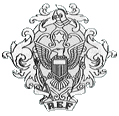
|
||||
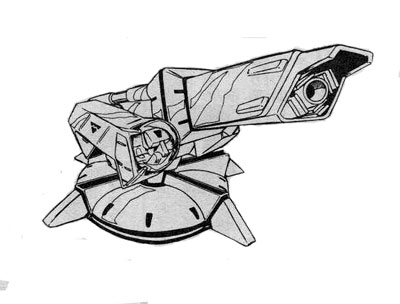
|
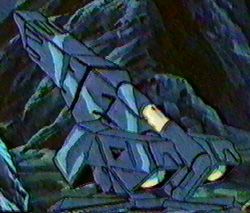
|
||||
| Length: | 11.2 meters |
| Width: | 7.7 meters |
| Height: | 3.8 meters (without cannon) |
| 7.2 meters (with cannon) | |
| Weight: | 8.4 metric tons. |
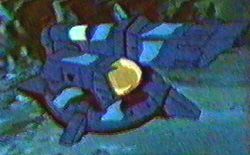
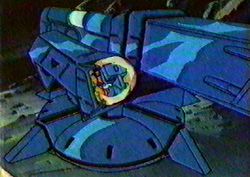
The skin of the Synchro Cannon is composed of an advanced titanium-steel alloy. The skin stops all small arms fire, provides fair protection against heavier infantry weapons, such as a 12.7mm machinegun round, and poor resistance to light mecha-mounted weaponry, such as the Zentraedi 22.3mm HE autocannon round.
The Synchro Cannon provides full protection from nuclear, biological, and chemical hazards, using a sealed cockpit environment activated by radiation and hazardous chemical sensors, or manually when biological warfare conditions are anticipated. The internal consumables supplies can provide atmosphere for one day maximum, although filters can purify outside air for release into the cockpit.
The Synchro Cannon is a very high yield direct-fire weapon system designed to attack enemy emplacements and thick mecha concentrations such as those used by the Invid. As such, it is a complement to the Destabilizer weapon systems, which break down Invid force fields, and thus give the Synchro Cannons a clear line of fire. Originally, the specifications asked for a pure particle beam weapon. However, the required firepower/size combination could not be achieved with the then-present technological levels and the cannon was reworked into a fusion-powered plasma cannon, which used twin synchrotrons, and resulted in the nickname of 'Synchro Cannon'.
The Synchro Cannon operates by running a fusion reactor (not unlike those found in fusion turbines) off the protoculture cells. When a shot is fired, a relative large amount of the fusion plasma is drawn from the reactor and injected into a plasma expansion chamber, pre-loaded with a small slug of matter, which is quickly super-heated; this process produces a larger amount of cooler plasma, which can be more easilly handled by the cannon stage. That stage consists out of an ion extractor and divider, which separates the plasma in positive and negative ions. Both stream are then lead to dedicated synchrotrons, which accelerate the matter streams. Both beams are then rejoined in the barrel, and the result is a plasma stream of very high speed and tremendous destructive power.
To the left side of the cannon barrel is the fusion reactor and the matter supply for the plasma cannon; to the right is the cockpit. In the rear of both the cockpit and the powerplant body is one of the propulsion turbofans. The cannon uses a hovercraft undercarriage, on which it can rotate through 360 degrees. This gives the cannon some mobility, but speed is low, terrain clearance is difficult due to the high center of gravity, and the cannon cannot be fired on the move. Consequently, the Synchro Cannon is mostly a heavy support or even a siege weapon rather than an assault cannon. However, the self-propelled cannon lacks any defensive capabilities and relies on other mecha to defend it.
Several of these cannons made it to the Earth's surface during the attack on Reflex Point. However, they were to few in number, and to cumbersome, to have an appreciable impact on the fighting.
Return to REF Vehicles Index.
Go to Robotech Reference Guide Home Page.
Robotech (R) is the property of Harmony Gold. This document is in no way intended to infringe upon their rights.
Content by Rob Morgenstern